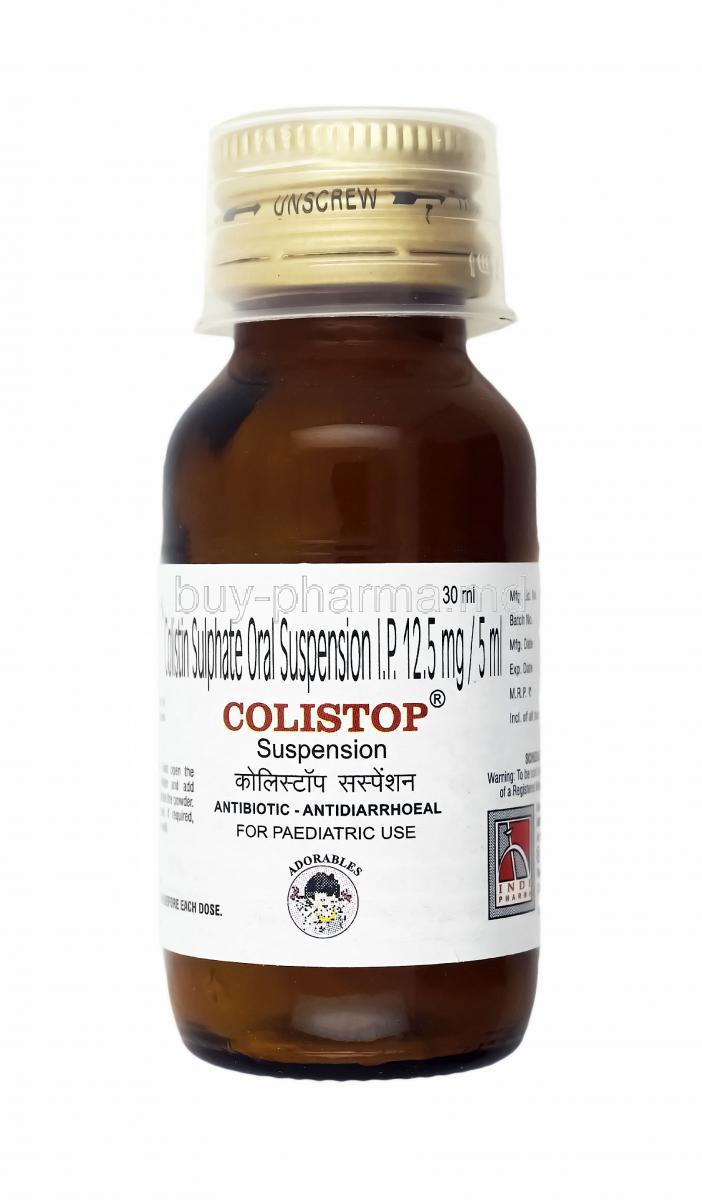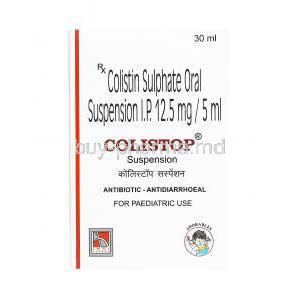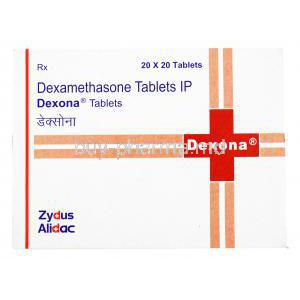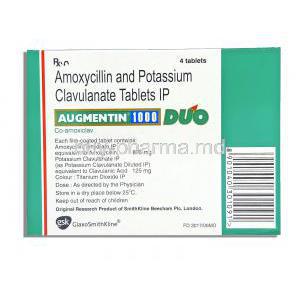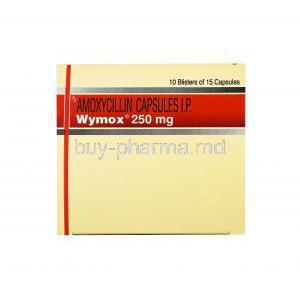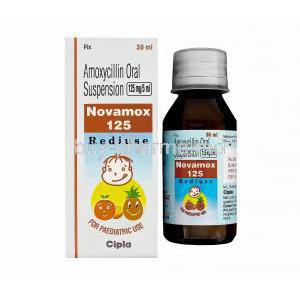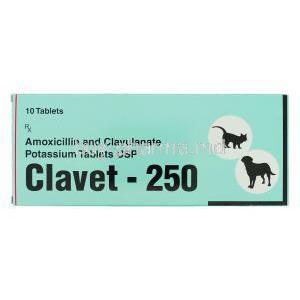Colistop Suspension, Colistin
- Introduction to Colistop Suspension, Colistin
- Uses of Colistop Suspension
- Dosage and Administration of Colistop Suspension
- Side Effects of Colistin
- Contraindications and Precautions
- Administration to Special Populations
- Managing Overdosage
- Storage and Handling of Colistop Suspension
- Important Precautions
- Careful Administration
Introduction to Colistop Suspension, Colistin
Colistop Suspension, which contains the antibiotic Colistin stands out as a crucial remedy in the fight against bacterial infections that resist multiple treatments. Colistin, a type of antibiotic is highly praised for its effectiveness in battling bacteria that are resistant to other antibiotics. This introduction emphasizes the importance of Colistin, in care and highlights the essential role played by Colistop Suspension in treatment.
Overview of Colistin as an Antibiotic
Colistin serves as a defense against tough bacterial foes, particularly those that defy many other types of antimicrobial treatments. Its comeback in the field of medicine is credited to its way of working focusing on disturbing the protective membrane of bacterial cells. The importance of Colistin in healthcare cannot be emphasized enough offering hope, for patients fighting severe and stubborn infections.

Bacterial Cell Structure
The Role and Importance of Colistop Suspension in Medical Treatment
Colistop Suspension, a form of Colistin is crafted to improve patient adherence and flexibility. Its importance lies in ensuring dosing, particularly crucial for children and older adults. This suspension aids, in treating infections with a method that is easy to use and efficient.
Composition of Colistop Suspension
- Active Components and How They Work; The main active component, Colistin is well known for its ability to kill bacteria. It attaches specifically to the lipids in cell membranes causing them to break apart and the cells to die. This targeted effect makes Colistin extremely valuable in treating infections caused by types of bacteria that are harder to fight.
- Additional Ingredients and Their Role in the Mixture; The ingredients in Colistop Suspension, like stabilizers, preservatives, and flavor enhancers have an important function. They help maintain the stability of the ingredient extend its shelf life and improve its taste so that the treatment remains effective without compromising how easily patients can take it.
How Colistin Works
The way Colistin works to kill bacteria is really interesting and intricate. It gets into the cell membrane and changes how it lets things pass through. It's like putting a wedge there that messes up the membrane structure. This causes stuff from inside the cell to leak out leading to the death of the bacterium. Colistin's ability to target gram bacteria specifically shows how it can be effective against tough infections.
In short Colistop Suspension not only offers an effective treatment option with Colistin but also makes it easy for patients to use due to its formulation. Its method of action is crucial in combating antibiotic bacterial infections emphasizing the need for such antibiotics, in modern medicine.
Uses of Colistop Suspension
The world of medicine benefits from Colistop Suspension, a medication containing Colistin, which plays a role in the field of antibiotics with a specific yet crucial range of effectiveness.
This section aims to explain the approved uses of Colistop Suspension, the types of bacteria it can treat, and explores its potential off-label uses, where it can be used for purposes, beyond its officially approved uses.
Indicated Uses in Treating Infections
Colistop Suspension is mainly used to treat infections caused by types of gram-negative bacteria(1). It is prescribed for urinary tract infections(2), meningitis(3), and pneumonia especially when other antibiotics have been ineffective due to resistance. The medication-targeted approach to eliminating bacteria underscores its importance, in medical treatment.
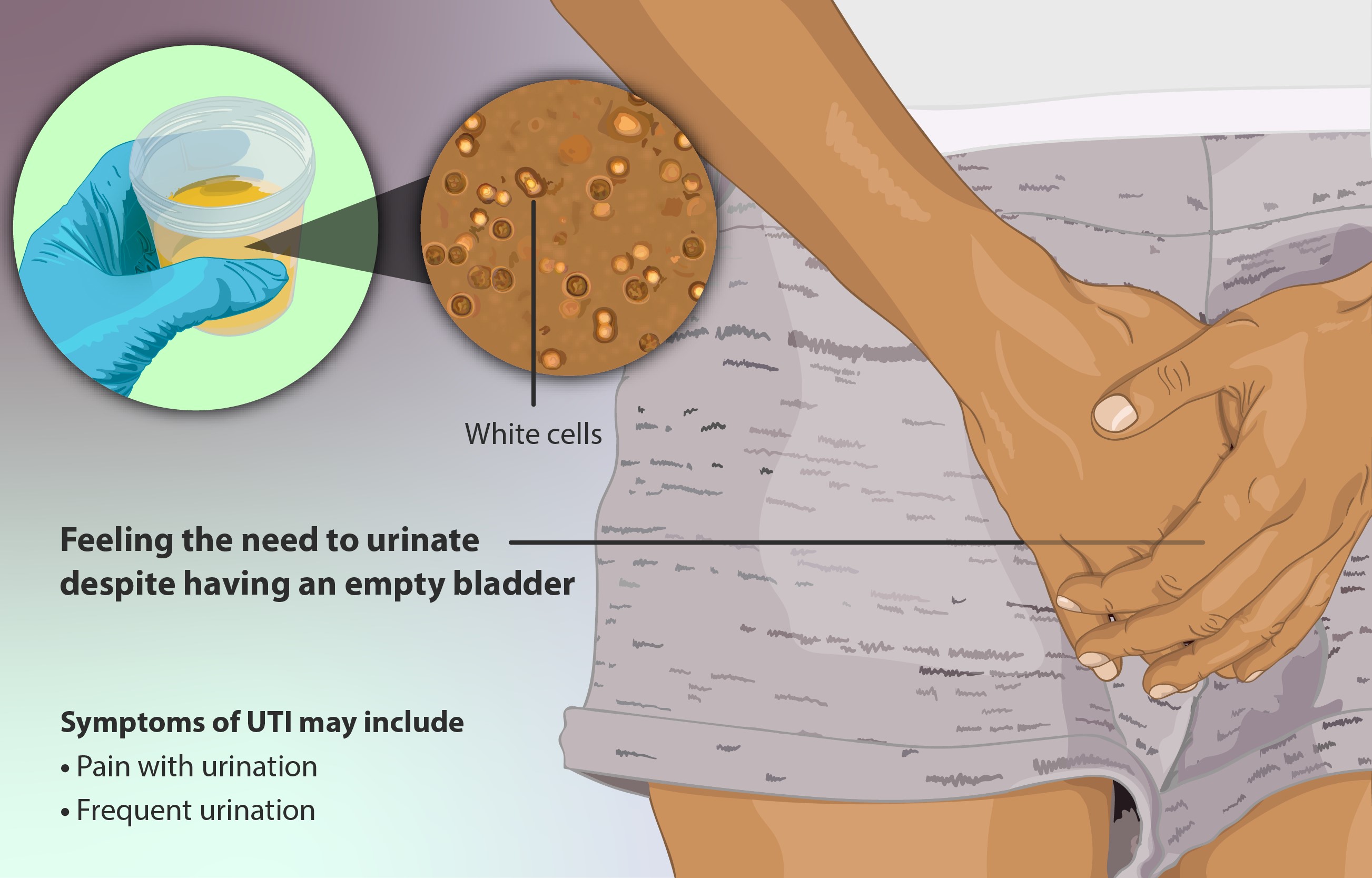
UTI
4. PubMed Central - Colistin for lung infection: an update
The Spectrum of Bacteria Targeted by Colistin
The powerful antibacterial effect of Colistin is most effective against a range of gram-negative bacteria, such as Pseudomonas aeruginosa(1), Acinetobacter baumannii, and different types of Enterobacteriaceae. These microbes are commonly found in hospital-acquired infections. Pose a significant challenge due to their resistance to many antibiotics. Colistin works by disrupting the cell membrane making it a strong opponent against these pathogens.
- Pseudomonas aeruginosa is known for causing urinary tract infections
- Acinetobacter baumannii is often responsible for infections acquired in intensive care units, including bloodstream infections.
- Enterobacteriaceae includes bacteria that can lead to different types of infections such, as Klebsiella pneumoniae and Escherichia coli.
2. National Library of Medicine - Colistin Resistance in Acinetobacter baumannii: Molecular Mechanisms and Epidemiology
Off-Label Uses: Exploring Unapproved but Practiced Treatments
Although Colistop Suspension is primarily used for established indications doctors sometimes rely on their judgment to use Colistin for treating infections that are not officially approved.
These off-label uses are based on evidence and the urgent need for effective treatments against stubborn infections. Notably, this includes treating infections caused by bacteria with multiple drugs when standard therapies have failed.
In summary, Colistop Suspension containing Colistin provides hope in fighting antibiotic infections. The importance of using it both as per its approved and off-label uses cannot be overstated to ensure its effectiveness, for future generations.
Dosage and Administration of Colistop Suspension
In a setting getting the right amount and way of giving Colistop Suspension is crucial for maximizing its antibacterial effectiveness. This discussion intends to explain the doses, for different age groups and infections clarify how to administer it correctly, and discuss how to adjust in cases of kidney issues all to ensure a thorough grasp of using it wisely.
Recommended Dosages for Different Age Groups and Infections
The dosage of Colistop Suspension should be carefully adjusted based on the patient's age the seriousness of the infection and the susceptibility of the pathogen. Here are some recommended dosages to consider;
- Adults; In cases of infections the dosage can vary from 2.5 to 5 mg/kg body weight per day split into 2 3 doses.
- Children; It is suggested to administer a dosage of 1.5 to 3 mg/kg body weight per day in divided doses depending on the infection severity and type.
- Neonates and Infants; Considering their developing renal function it is advisable to give a reduced dosage of 1 to 2 mg/kg body weight, per day in two divided doses.
These dosages serve as a guide. Should be adjusted according to each patient's specific clinical condition.
Administration Guidelines for Optimal Efficacy
For the results with Colistop Suspension, it's crucial to follow these guidelines;
- Shake well; Make sure to give the suspension a good shake before using it so that it's evenly mixed.
- Measure accurately; Use the right measuring tool to make sure you're giving the correct dose.
- Timing matters; Stick to a regular schedule, between doses to keep plasma levels steady.
Following these steps will help maximize the benefits of using Colistop Suspension.
Adjustments in Renal Impairment
The function of the kidneys has an impact on how Colistin behaves in the body leading to the need for dosage adjustments in patients with kidney issues to prevent kidney damage. It is recommended to follow these guidelines;
- For mild to kidney problems adjusting the dose or frequency of administration may be necessary depending on the rate at which creatinine is cleared from the body.
- In cases of kidney impairment, a substantial reduction in dosage and careful monitoring of kidney function are crucial.
Seeking advice from a kidney specialist and regularly checking kidney function parameters is recommended to customize the dosage of Colistop Suspension for patients with kidney problems.
Overall administering Colistop Suspension by following precise dosage instructions proper administration methods and adjustments for kidney issues is essential, for improving patient outcomes while reducing the risk of unwanted side effects.
Side Effects of Colistin
Colistin, an antibiotic may come with various side effects that can vary in intensity. It is crucial for healthcare providers to be aware of these adverse reactions know how to manage them effectively and understand how Colistin interacts with other medications to promote patient safety and improve treatment results. This article offers a look, at the possible side effects of Colistin discusses ways to handle mild to moderate responses explores severe complications, and emphasizes the importance of considering drug interactions.
Overview of Common Side Effects
Patients who are given Colistin might encounter typical side effects, which are usually controllable and may lessen as the body gets used to the medication. These can include feelings of nausea and vomiting, skin irritation, itchiness, dizziness, and fungal infections in the mouth or vagina. While these symptoms can be bothersome they often signal the body's reaction, to the antibiotic. Typically do not require discontinuation of treatment.

Dizziness
Managing Mild to Moderate Adverse Reactions
The mild to adverse reactions of Colistin can be effectively addressed through supportive treatment or modifications, in treatment.
Approaches may involve;
- Making sure to stay well hydrated to reduce kidney-related issues
- Using nausea medication to manage nausea
- Checking kidney function regularly and making dose adjustments when needed
These steps can greatly reduce discomfort and stop the worsening of side effects.
Serious Side Effects and Complications
Although rare Colistin can cause side effects that require prompt medical intervention. Some of the significant ones include;
Identifying and Responding to Severe Adverse Effects
Severe responses may manifest as breathing problems, intense skin irritation, or notable alterations, in urine production. It is vital to discontinue the medication and seek immediate medical assistance to minimize these potential dangers.
Nephrotoxicity and Neurotoxicity: Risk Factors and Symptoms
Colistin's main worrying side effects involve kidney damage and nerve damage. Signs like reduced urine output, levels of creatinine in the blood muscle weakness, and tingling sensations should be checked right away. People with existing kidney problems or who are taking drugs that can harm the kidneys are more vulnerable, to these risks.
Interaction with Other Medications
Using Colistin alongside medications can lead to interactions that might increase toxicity or reduce the effectiveness of treatment. It's crucial for healthcare providers to be aware of these interactions, in order to provide care for patients.
Potential Drug Interactions and Their Consequences
Noteworthy encounters involve;
- Heightened chances of kidney toxicity with substances like aminoglycosides, nonsteroidal anti-inflammatory drugs (NSAIDs), and cyclosporine.
- There is also the possibility of nerve-related impacts with medications that have neurotoxic properties, such, as specific anesthetics and muscle relaxants.
Avoiding Adverse Interactions: What Clinicians Need to Know
Healthcare providers need to examine the medications patients are taking explore different antibiotics when necessary and keep a close eye out for any signs of potential harm particularly in patients with kidney issues or those on other medications that could affect the kidneys or nerves.
In summary, although Colistin is crucial for fighting drug bacterial infections it comes with risks. It's essential to understand its side effects monitor patients closely and manage any potential drug interactions wisely to ensure its benefits outweigh the risks, for the patient.
Contraindications and Precautions
Using Colistop Suspension, an antibiotic, with Colistin requires a thorough grasp of its limitations and the precautions needed for certain groups. This part discusses when to avoid Colistop Suspension and details the steps to reduce risks prioritize patient safety and enhance treatment results.
Conditions and Scenarios Where Colistop Suspension Should Be Avoided
Before starting Colistop Suspension it's important to know that it shouldn't be used in patients to Colistin or any of its components. Additionally, extra care is needed when using it in cases of existing kidney issues due to the higher risk of kidney problems and in patients with neuromuscular disorders, like myasthenia gravis as it may worsen muscle weakness. It's crucial to be aware of these restrictions and review the patient's history for these conditions before beginning treatment.
Precautionary Measures for Specific Populations
The diverse ways Colistin works in the body and its effects differ depending on the patient's characteristics. Specific groups require precautions; Monitoring kidney function is crucial to adjust doses appropriately and lower the risks of kidney damage. It's important to keep patients hydrated to support their kidneys and minimize potential harm.
Administration to Special Populations
Administering Colistop Suspension to populations necessitates a thorough evaluation of the drug effects and associated risks to guarantee its safety and effectiveness.
Elderly: Adjustments and Considerations
As people age their bodies undergo changes that can impact how medications are processed and eliminated. It's important to adjust dosages and keep a close eye out for any negative reactions, especially kidney and nerve-related issues. Checking kidney function thoroughly before and, during treatment is crucial.
Pregnant Women and Nursing Mothers: Safety and Recommendations
The safety of Colistop Suspension while pregnant or breastfeeding is uncertain. It should only be used if the advantages outweigh the risks to the baby. It's advisable to seek advice, from a specialist to evaluate treatment choices.
Children: Dosage Guidelines and Precautions
When it comes to kids the amount of Colistop Suspension they should take needs to be calculated with precision taking into account their weight and how severe the infection is. Because their kidneys and brains are still developing it's crucial to keep an eye out for any signs of potential harm.
Managing Overdosage
With careful administration, an overdose of Colistop Suspension may happen, requiring quick identification and handling to avoid severe consequences.
Signs of Overdosage and Immediate Actions
Symptoms of taking much Colistin may include kidney problems, nerve issues like tingling or weakness, and, in serious situations, difficulty breathing. If an overdose is suspected it's important to stop using Colistop Suspension and provide care to support essential bodily functions.
Treatment Strategies and Supportive Care
There isn't a remedy for an overdose of Colistin; therefore treatment involves providing support and addressing symptoms. Key approaches include ensuring the kidneys receive blood flow and closely monitoring kidney function.
Additionally, supportive measures should be taken for any breathing difficulties that may arise. In cases of kidney impairment dialysis may be an option.
Healthcare providers can effectively handle the challenges of treating with this antibiotic by using Colistop Suspension judiciously following contraindications and precautions and carefully managing special patient groups and overdose situations to maximize therapeutic benefits while minimizing potential risks.
Storage and Handling of Colistop Suspension
Storing and handling Colistop Suspension correctly is crucial to maintain its effectiveness and ensure usage. This section discusses the storage conditions for Colistop Suspension as well as provides instructions, on handling and disposing of it safely with the aim of protecting both patient well-being and environmental health.
Recommended Storage Conditions to Ensure Potency
To keep the healing power of Colistop Suspension intact it's best to store the suspension at room temperature shielded from sunlight and moisture. The ideal temperature range to uphold its effectiveness usually falls between 20°C to 25°C (68°F to 77°F) allowing for deviations, within set boundaries. Refrigeration isn't necessary unless advised by the manufacturer and freezing should be avoided to maintain the stability of the formula.
Guidelines for Safe Handling and Disposal
Properly handling Colistop Suspension requires following safety measures to prevent accidental ingestion or skin exposure. If there's a spill it's recommended to clean the area thoroughly using water and soap. When disposing of expired Colistop Suspension make sure to follow local guidelines, for getting rid of medication. This helps reduce the chances of pollution and deters misuse of antibiotics.
Important Precautions
When using Colistop Suspension in settings it is crucial to take necessary precautions to avoid antibiotic resistance and maintain the effectiveness of the medication. These steps are essential, for improving outcomes and protecting public health.
Monitoring and Preventing Antibiotic Resistance
The rise of bacteria that are resistant to antibiotics poses a major hurdle, in today's medical field. To tackle this issue medical professionals should;
- Use Colistop Suspension judiciously prescribing it when it is truly necessary.
- Advocate for testing to confirm the effectiveness of Colistin before starting treatment.
- Continuously monitor how well the treatment is working and make adjustments based on both observations and microbiological results.
By following these approaches we can promote antibiotic use and help slow down the spread of resistance.
Ensuring Therapeutic Efficacy Through Compliance
Ensuring that patients follow the recommended treatment plan is crucial, for therapy outcomes. It is important to educate patients about the significance of finishing the treatment even if they start feeling better to effectively eliminate the infection and avoid resistance development.
Careful Administration
Administering Colistop Suspension with care is crucial for optimizing treatment results and reducing the chances of reactions. This segment provides tips, for both healthcare providers and patients highlighting the significance of following the prescribed treatment duration and dosage accurately.
Tips for Optimizing Treatment Outcomes
To improve the effectiveness of treatment, with Colistop Suspension it is important to;
- Measure the dose accurately and administer it correctly.
- Stick to consistent dosing schedules to maintain plasma levels.
- Monitor function regularly and adjust doses if needed to reduce the risk of kidney damage.
These steps help maximize the benefits of using Colistop Suspension while also ensuring safety.
Importance of Adhering to Treatment Duration and Dosage
It is crucial for the success of Colistop Suspension therapy that patients and caregivers adhere to the recommended treatment duration and dosage.
Changing the dosage or stopping the treatment early without consulting a healthcare provider can result in treatment not working, worsening of the infection, or resistance developing.
It is important to educate patients and caregivers about the importance of following the treatment plan as prescribed. Overall properly managing Colistop Suspension from storage and administration to adherence is vital, in ensuring its effectiveness and safety.
By following these instructions both healthcare professionals and patients can help treat infections while reducing the risk of antibiotic resistance.

